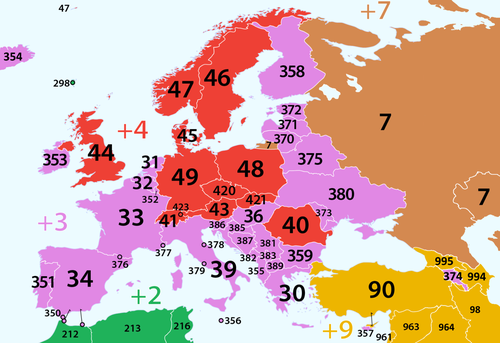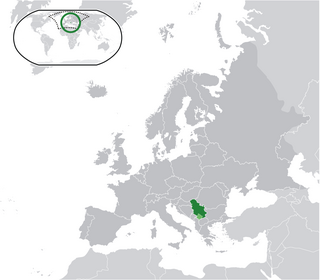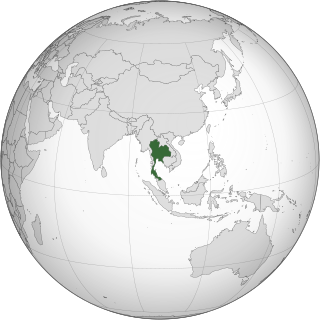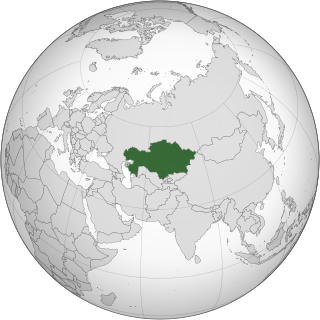Telephone numbers in Europe
Last updatedThis article needs additional citations for verification .(August 2014) |

Telephone numbers in Europe are managed by the national telecommunications authorities of each country. Most country codes start with 3 and 4, but some countries that by the Copenhagen criteria are considered part of Europe have country codes starting on numbers most common outside of Europe (e.g. Faroe Islands of Denmark have a code starting on number 2, which is most common in Africa).
Contents
- European Economic Area
- Other European countries/territories
- Harmonized service numbers
- Single numbering plan (1996 proposal)
- See also
- Notes
- References
- External links
The international access code (dial out code) has been standardized as 00, as recommended by the International Telecommunication Union (ITU).
European Economic Area
| Country | Country code | National number length | Dialing plan * | International access code | National trunk prefix | ||
|---|---|---|---|---|---|---|---|
| | 43 | 4 to 13 | variable | 00 | 0 | ||
| | 32 | 8 to 10 | fixed with 0 | 00 | 0 | ||
| | 359 | 7 to 9 | variable | 00 | 0 | ||
| | 385 | 8 or 9 (some mobile) | variable | 00 | 0 | ||
| | 357 | 8 | fixed | 00 | – | ||
| | 420 | 9 | fixed | 00 | – | ||
| | 45 | 8 | fixed | 00 | – | ||
| | 372 | 7 (fixed or mobile), 8 (mobile) | fixed | 00 | – | ||
| | 358 | 5 to 12 | variable | 00 | 0 | ||
| | 33 | 9 | fixed with 0 | 00 | 0 | ||
| | 49 | 3 to 12 | variable | 00 | 0 | ||
| | 30 | 4 to 5 (company numbers) 10 (fixed and mobile) | fixed | 00 | – | ||
| | 36 | 8 (landline) or 9 (mobile) | variable | 00 | 06 | ||
| | 354 | 7 (mobile and landline) or 9 (for 3xxxxxxxx) | fixed | 00 | – | ||
| | 353 | 7 to 9; 10 (mobile voicemail and Northern Ireland) | variable | 00 | 0 | ||
| | 39 | 6 to 12 | fixed | 00 | – | ||
| | 371 | 8 | fixed | 00 | – | ||
| | 423 | up to 12 (generally is 7) | fixed | 00 | – | ||
| | 370 | 8 | variable | 00 | 0 | ||
| | 352 | 8 (fixed new numbering plan); 9 (mobile); 12 (mobile telematic); 4-11 (historic numbers still active) [1] | fixed | 00 | – | ||
| | 356 | 8 | fixed | 00 | – | ||
| | 31 | 9 | variable | 00 | 0 | ||
| | 47 | 4-12 (generally 8) | fixed | 00 | – | ||
| | 48 | 9 | fixed | 00 | – | ||
| | 351 | 9 | fixed | 00 | – | ||
| | 40 | 9 | fixed with 0 | 00 | 0 | ||
| | 421 | 9 | variable | 00 | 0 | ||
| | 386 | 8 | variable | 00 | 0 | ||
| | 34 | 9 (3 for emergency services, 4 for phone companies, 5 and starting with 118 for telephonic information, 6 and starting with 116 for social interest and 5 or 6 with starting with other numbers that are not listed before for premium services) | fixed | 00 | – | ||
| | 46 | 6 to 9 | 00 | 0 | |||
| All European Economic Area member states apply the European Union roaming regulations. The regulation eventually led to the abolition of all roaming charges for temporary roaming when traveling within the EEA as of June 15, 2017. The European Union international calls regulations regulate prices of calls (and text messages) when calling from your home country to another EEA country. | |||||||
Other European countries/territories
| Country | Country code | National number length | Dialing plan | International access code | National trunk prefix |
|---|---|---|---|---|---|
| | 7 840 (landline) / 7 940 (mobile) | 7 | variable | 8~10 | 8 |
| | 355 | 8 (fixed), 9 (mobile) | variable | 00 | 0 |
| | 376 | 6 or 9 (in special cases) | fixed | 00 | – |
| | 374 | 8 | variable | 00 | 0 |
| | 375 | 9 | variable | 00 | 0 |
| | 387 | 8 to 9 | variable | 00 | 0 |
| | 298 | 6 | fixed | 00 | – |
| | 995 | 9 | variable | 00 | 0 |
| | 350 | 8 | fixed | 00 | – |
| | 383 | 8 | variable | 00 | 0 |
| | 389 | 8 | variable | 00 | 0 |
| | 373 | 8 | fixed with 0 [2] | 00 | 0 |
| | 377 | 8 to 9 | fixed (?) | 00 | – |
| | 382 | 8 | fixed | 00 | 0 |
| | 7 (shared with Kazakhstan) | 10 | variable | 8~10 | 8 |
| | 378 | 6 to 12 | fixed | 00 | – |
| | 381 | 8 to 10 | variable | 00 | 0 |
| | 7 850 (fixed), 7 929 (mobile) | 5 to 7 | variable | 8~10 | 8 |
| | 41 | 9 | fixed with 0 | 00 | 0 |
| | 373 5 / 373 2 (Moldova codes used) | 7 | variable | 00 | 0 |
| | 90 | 10 | fixed | 00 | 0 |
| | 90 392 (fixed), 90 533 / 90 542 (mobile) | 7 | fixed | 00 | 0 |
| | 44 | 9 or 10 digits (geographic); 7, 9 or 10 (non-geographic) | variable | 00 | 0 |
| | 380 | 9 | variable | 00 | 0 |
| | 379 (not activated) |
† = Disputed state, may not be recognized as an independent state by some or all European Union members.
*A variable dialing plan has different dialing procedures for local and long-distance telephone calls. A call within the same city or within an area is dialed only by the subscriber number, while for calls outside the area, the telephone number must be prefixed with the destination area code. A fixed dialing plan requires to dial all digits of the complete telephone number, including any area codes.
Harmonized service numbers
The following service numbers are harmonized across the European Union:
- 112 for emergency services [5] [6]
- 116xxx for (other) harmonized services of social value
Single numbering plan (1996 proposal)
In 1996, the European Commission proposed the introduction of a single telephone numbering plan, in which all European Union member states would use the country code 3. Calls between member states would no longer require the international access code 00. Instead the digit 1 was proposed for these calls, replaced by the country code 3 for calls from outside the EU. Each country would have a two-digit country code after the 1 or the 3. Calls within each country would not be affected.
This proposal would have required states such as Germany, the United Kingdom, Denmark and others, whose country codes began with the digit '4', to return these to the International Telecommunication Union.
A Green Paper on the proposal was published, but the disruption and inconvenience of the change was deemed to outweigh any advantages.
A disadvantage would have been that every local number beginning with "1" would have had to be changed (except emergency number which would be kept).
Another disadvantage would be that people wanting to call France (e.g. Southeast France using +33 4...) using an old number would connect another country like Spain, or people wanting to call Spain (e.g. +34 9...) would end up in e.g. Germany if they use an old number.
The EU proposal should not be confused with the European Telephony Numbering Space (ETNS), which uses the country code 388, and was intended to complement, rather than replace, existing national numbering plans.
See also
Notes
Related Research Articles

The North American Numbering Plan (NANP) is a telephone numbering plan for twenty-five regions in twenty countries, primarily in North America and the Caribbean. This group is historically known as World Zone 1 and has the telephone country code 1. Some North American countries, most notably Mexico, do not participate with the NANP.
A telephone numbering plan is a type of numbering scheme used in telecommunication to assign telephone numbers to subscriber telephones or other telephony endpoints. Telephone numbers are the addresses of participants in a telephone network, reachable by a system of destination code routing. Telephone numbering plans are defined in each of the administrative regions of the public switched telephone network (PSTN) and in private telephone networks.

The French telephone numbering plan is used in Metropolitan France, French overseas departments and some overseas collectivities.

Telephone numbers in the Netherlands are administered by the Ministry of Economic Affairs, Agriculture and Innovation of the Netherlands. The telephone numbering plan may be grouped into three general categories: geographical numbers, non-geographical numbers, and numbers for public services.
In Argentina, area codes are two, three, or four digits long. Local customer numbers are six to eight digits long. The total number of digits is ten, for example, phone number (11) 1234-5678 for Buenos Aires is made up of a 2-digit area code number and an 8-digit subscriber's number, while (383) 123-4567 would be an example of a Catamarca number.

The area code 868 is assigned to Trinidad and Tobago, a member of the North American Numbering Plan (NANP). The telephone numbering plan for the country is known as the National Numbering Plan. It is part of a system used for assigning telephone numbers in Trinidad and Tobago, and functions as a part of the North American Numbering Plan (NANP). It is regulated by the Telecommunications Authority of Trinidad and Tobago, which holds responsibility for telecommunications in the country.
Area code 246 is the telephone area code in the North American Numbering Plan (NANP) for Barbados. The sequence 246 spells BIM on an alpha-numeric telephone keypad, a nickname for the island.

Regulation of the telephone numbers in Serbia is under the responsibility of the Regulatory Agency of Electronic Communication and Mail Services (RATEL), independent regulatory authority. The country calling code of Serbia is +381. The country has an open telephone numbering plan, with most numbers consisting of a 2- or 3-digit calling code and a 6-7 digits of customer number.

The Spanish telephone numbering plan is the allocation of telephone numbers in Spain. It was previously regulated by the Comisión del Mercado de las Telecomunicaciones (CMT), but is now regulated by the Comisión Nacional de los Mercados y la Competencia (CNMC).
Lithuania uses an open telephone numbering plan with all phone numbers having nine digits, including the prefix "0", a 1–3 digit area code, and a 5–7 digit subscriber telephone number.

Telephone numbers in Italy are managed by the Autorità per le Garanzie nelle Comunicazioni (AGCOM), a national regulatory authority for the communication industry located in Rome.

The regulation of telephone numbers in Germany is the responsibility of the Federal Network Agency of the German government. The agency has a mandate to telecommunications in Germany and other infrastructure systems.

Thailand's telephone numbering plan in Thailand is managed by the National Broadcasting and Telecommunications Commission (NBTC) in accordance with International Telecommunication Union's (ITU) recommendation E.164.

Telephone numbers in Russia are administered by Roskomnadzor, and Ministry of Digital Development, Communications and Mass Communications of the Russian Federation. Russia's National Numbering Plan (NNP) is a four-level telephone numbering plan with local, zone, country, and international scopes, implementing a closed numbering plan, in which the number of digits of all national significant numbers (NSN) assigned to subscriber telephones is fixed at ten, with three digits for the area code, and a seven-digit subscriber number which includes a zone code of up to two digits. Internationally, Russia participates in the numbering plans of the International Telecommunication Union (ITU) provided by recommendations E.164 and E.123, using the telephone country code 7.
The following telephone numbers in Kenya are destination codes for international calls terminating in Kenya as well as the procedures for dialling internationally from within Kenya. Until 1999, Kenya shared its telephone numbering plan with Tanzania and Uganda, meaning that to make calls between the three countries, subscribers needed only dial the area code and number, a legacy of the East African Post and Telecommunications Corporation (EAPTC) which was dissolved in 1977. As a result of the reorganisation of Tanzania's numbering plan in that year, direct dialling was discontinued, although calls between the three countries do not require international dialling, only a special three-digit code.
National conventions for writing telephone numbers vary by country. The International Telecommunication Union (ITU) publishes a recommendation entitled Notation for national and international telephone numbers, e-mail addresses and Web addresses. Recommendation E.123 specifies the format of telephone numbers assigned to telephones and similar communication endpoints in national telephone numbering plans.

A telephone number is a sequence of digits assigned to a landline telephone subscriber station connected to a telephone line or to a wireless electronic telephony device, such as a radio telephone or a mobile telephone, or to other devices for data transmission via the public switched telephone network (PSTN) or other public and private networks.

Telephone numbers in Kazakhstan are regulated by the Telecommunications Committee of the Ministry of Digital Development, Innovations, and Aerospace Industry in the Republic of Kazakhstan, and administered by telecommunication providers, such as Kazakhtelecom, a state-backed and the largest national operator.
Telephone numbers in San Marino have six to ten digits. Numbers starting with either 0, 8 or 9 are assigned to landlines, 6 is used for mobile services, 5 for IP telephony services and 7 for premium numbers. No trunk prefixes are used: all the digits are always dialed.
The Belize telephone numbering plan is the system used for assigning telephone numbers in Belize.
References
- ↑ "E.164 Number Ranges in use in Luxembourg" (PDF). Institut Luxembourgeois de Régulation. October 2017.
- ↑ "Moldova Switches over to "Closed" Type Numbering Plan for Fixed Telephone Subscribers | ANRCETI".
- ↑ "Абонентам ДНР и ЛНР выделен телефонный код российской системы нумерации". Rossiyskaya Gazeta (in Russian). 7 May 2022. Retrieved 7 May 2022.
- ↑ Petrenko, Roman (7 May 2022). "Russia switches mobile operators of certain areas of occupied territories to its +7 telephone code". Ukrayinska Pravda . Retrieved 7 May 2022.
- ↑ "112 – The European emergency number". European Commission – Information Society. Retrieved 31 January 2011.
- ↑ "SOS 112 Europe" . Retrieved 31 January 2011.
External links
Text is available under the CC BY-SA 4.0 license; additional terms may apply.
Images, videos and audio are available under their respective licenses.